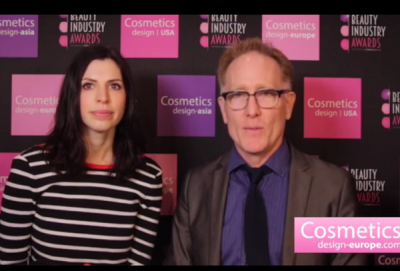Top Southeast Asian trends influencing Western facial skin care

With the APAC region known for its roots in traditional medicine, global marketplaces are drawn to how natural ingredients can be effectively promoted through multidimensional campaigns.
Market research company, Mintel, reveals how beauty brands are preparing to create new formulae that provide insights into Eastern-based natural ingredients.
Top influencers
As US millennials strive to model Eastern beauty buys and grooming routines using authentic products, we take a look at the four key growth areas that Mintel expects to see take off.
1. Seaweed
After conducting its Facial Skincare and Anti-Aging US 2016 report, Mintel found that 40% of Millennials have used products that feature seaweed and highlighted the popularity of macroalgae.
Of the 2 out of 5 asked, consumers also displayed an interest in the inclusion of natural ingredients.
In the US, more and more beauty buyers are curious about seaweed, as it has become increasingly prominent in US facial, body and eye care products since 2014.
Mintel recommends that brands formulating products with seaweed as a key functional ingredient should develop a healthy, eco-friendly and environmental message to present to its multigenerational audience.
2. Turmeric
Recently marketed as a superfood, Turmeric has been used traditionally in Indian Ayurveda medicine and has been recognised for its antioxidant and anti-inflammatory properties.
Turmeric also has the ability to provide UV protection due to one of its key actives, curcumin.
Mintel Global New Products Database (GNPD) found that turmeric’s worldwide use in facial skincare formulations rose between 2015 and 2016. This has since been reflected in the US market, with launches of facial skin care products rising by 0.7%.
Despite this increase, turmeric still only appears in a limited number of US body care products and still has relatively low exposure in body care products in the Western market.
To build its profile, Western brands seek to emphasise its relationship with positive health and wellbeing to cement its strong impact and Southeast Asian roots.
3. Multifunctionality
While CDA reported how the divide between the skin whitening trend in the East and the rate of self-tanning in the West, multifunctional claims in APAC relating to ‘UV-protection’ have proved popular in the US Millennials market.
Mintel also found that 25% of male consumers are interested in buying personal skin care products that relate to anti-pollutant solutions.
Other strong claims such as ‘soothing’ that also indicate additional skin benefits to simple moisturisation are high on the agenda for millennials, especially compared to older generations in the US.
As Mintel’s Body Care and Deodorant US 2016 report indicated how the younger US demographic seek calming and de-stressing products, the market research company emphasises the importance of protective body care formulae that support relaxation.
4. K Beauty
Korean exports to the US reached €613.4 mn in 2015 ( $663 mn), indicating the power of the K-Beauty phenomenon.
As this increase represents a 56% rise from the previous year, e-commerce Korean-inspired leaders including Glow Recipe and Peach & Lily, along with speciality retailers such as Sephora and Ulta are maximising interest, interactivity and engagement.
This trend has also reached the mainstream mass-market with Walmart and Target stocking a range of K-Beauty items.
According to Mintel’s Skincare Ingredients and Format Trends US 2016 report, natural ingredients are proving a fundamental part of the skin care and K-Beauty trends.
A quarter of US iGens are now seeking natural ingredients such as fermented plants, fruits and herbs, which are a common source of formulation and innovation in APAC personal care products.












